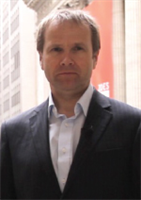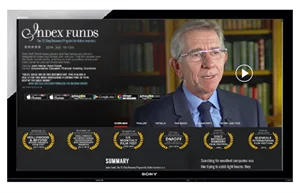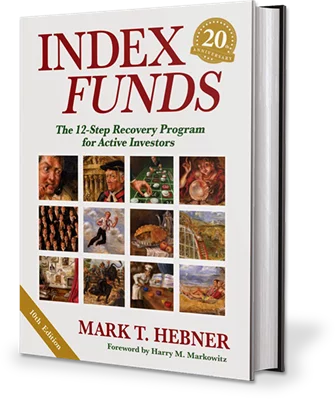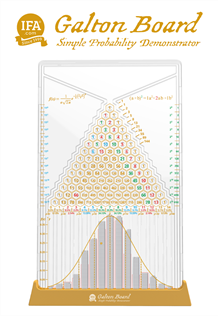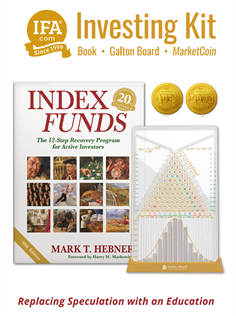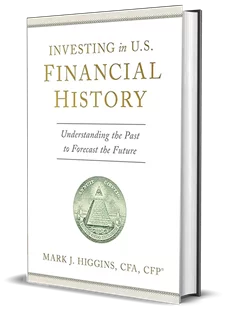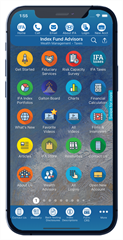Picture this: It's the end of a brutal quarter. Your public stock portfolio is down 15%, your bond holdings have barely moved, and you're feeling that familiar knot in your stomach as you scroll through the carnage. Then you check your private equity allocation. Down just 1.5%.
Relief washes over you. This is exactly why you diversified into alternatives, right? While others panic, your private equity allocation is barely dented. You might even mention it at dinner, proudly noting your "more diversified approach."
But what if that sense of security was built on an accounting mirage? What if your private equity investments were experiencing the same brutal downturn as everything else, but the numbers simply weren't showing it yet? New research suggests this scenario isn't hypothetical — it's happening right now in portfolios across America.
The comfort you felt from those stable private equity returns might be the financial equivalent of taking a painkiller for a broken leg. The injury is still there; you just can't feel it. When the anesthesia wears off, the pain hits all at once.
This false comfort has led institutions — from pensions to endowments — to pour unprecedented sums (sometimes 30% or more of their portfolios) into private markets. But mounting evidence suggests they may have fundamentally misunderstood what they were buying.
Smooth returns don't mean lower risk — they just delay the pain.
The Great Volatility Laundering Scheme
This phenomenon has a name: "volatility laundering." The term, popularized by investment research firm AQR, describes how private markets artificially smooth their reported returns through infrequent valuations and subjective pricing methods. It's not necessarily fraud, but it creates a dangerous mirage of stability.
Think of it like this: If you only checked your public stock portfolio once per quarter, and each time you looked, you simply assumed it was worth whatever you paid for it plus a steady 2% growth, your returns would look smooth too. But that smoothness wouldn't reflect the actual day-to-day volatility of your holdings.
This psychological manipulation isn't new. Throughout financial history, the most devastating bubbles have shared a common trait: the vast majority of participants couldn't imagine they were in one. As my IFA colleague and financial historian Mark Higgins observed in his recent analysis of speculative cycles, "A paradox of investing is that speculative excesses happen only when the vast majority of investors believe they can't happen."
The pattern is eerily familiar. Just as mortgage-backed securities appeared to offer higher returns with lower risk before 2008, private equity today presents itself as a superior asset class that somehow transcends basic investment principles. In both cases, complex structures and opaque pricing made it difficult for investors to assess true risk until it was too late.
This smoothed facade creates what behavioral economists call "false confidence." Investors see stable numbers and conclude they've found a free lunch. But markets rarely offer free lunches, especially not to the tune of trillions of dollars flowing into a single asset class.
Following the Yale Model Into a Stampede
This misleading calm has reshaped institutional investing — spurred by a model many followed blindly. The flood of money into private markets began around 2000, when David Swensen's Yale endowment became the poster child for "alternative investing." Institutional investors, mesmerized by Yale's exceptional returns, began copying the model without fully understanding what made it work.
Few paused to consider that Swensen's success might have been due to exceptional skill, early entry into underexplored markets, or simply good timing. Instead, they assumed the magic lay in the asset class itself.
The numbers tell the story of this mass migration. Private equity assets under management grew from roughly $1 trillion in 2010 to over $4 trillion by 2024. Public pension plans increased their average allocation to alternative investments from around 10% in 2001 to nearly 30% by 2023. This wasn't gradual diversification; it was a stampede.
But here's what those institutional investors didn't fully grasp: they were fundamentally changing the markets they were entering. When a small amount of smart money finds an inefficient corner of the market, it can generate excellent returns. When trillions of dollars chase the same strategy, those inefficiencies disappear.
The late-stage warning signs are everywhere. Private equity firms are sitting on a backlog of approximately 30,000 companies, according to recent Wall Street Journal reporting. The prospect of exiting these investments at acceptable prices has become increasingly challenging as public markets have grown skeptical of private market valuations.
When Private Funds Go Public
Fortunately, we don't have to rely on theoretical arguments about hidden volatility. There's a natural experiment happening right before our eyes.
Since 1987, private equity funds have been publicly listed and traded on the London Stock Exchange. These aren't obscure ventures but established funds managed by marquee firms like HarbourVest, Pantheon, and ICG Enterprise Trust. They provide both an internally calculated Net Asset Value (NAV) and real-time market prices determined by actual buyer and seller activity.
This setup creates a perfect laboratory for testing private equity's volatility claims. New research by Verdad Advisers examined ten of the largest and most liquid London-listed private equity funds over the past decade. While the funds reported average NAV volatility of just 14%, their actual stock trading prices showed volatility closer to 24% — 1.5 times higher than broad market volatility and similar to small-cap stocks.
Even more telling is how public markets value these funds relative to their reported NAVs. Currently, these listed private equity funds trade at just 70 cents on the dollar compared to their self-reported values. This massive discount suggests profound skepticism about the accuracy of private equity valuations. As recently as 2021, these same funds were trading at 90 cents on the dollar.
The academic research backs up these real-world observations. The Value of Smoothing (Baz et al. 2022) found that while private equity exhibits headline volatility around 10%, its true economic volatility approaches 30%. Similarly, Amortizing Volatility across Private Capital Investments (Anson, 2024) demonstrated how private capital managers "smooth their return profile and effectively amortize the volatility embedded in their private investments."
Three Frameworks for Understanding the Facade
To make sense of this volatility gap, consider three simple mental models that reveal how the private equity industry creates its smoothed returns.
The Zillow house flip principle
As Mark Higgins put it, private equity often marks up recent purchases like homeowners boasting about Zillow gains — on paper only. Some private equity funds systematically mark up their secondary investments within days of purchasing them, using the previous holder's valuation as justification. The gains are unrealized, the marks are subjective, yet the performance gets reported as fact.
The volatility mirage
Think of smoothed private equity returns like a photograph of a busy highway taken with a very long exposure. The cars (daily price movements) become invisible, leaving only the smooth road (the trend line). The road looks perfectly stable in the photo, but anyone driving on it experiences constant acceleration, braking, and lane changes.
Infrequent valuations create the same effect. The underlying companies experience the same business cycles, competitive pressures, and market forces as their public counterparts. But by reporting valuations quarterly and smoothing out short-term fluctuations, private equity creates a misleading calm.
The liquidity premium penalty
That 30% discount at which publicly traded private equity funds currently trade represents the market's assessment of what these investments are worth when you strip away the accounting games. This "liquidity premium" reflects the difficulty of exiting positions quickly, the opacity of underlying valuations, and growing skepticism about whether the smoothed returns are sustainable.
Five Steps to Navigate the Volatility Fog
Understanding that true volatility may be two or even three times higher than advertised doesn't mean you should panic. It means you need to make decisions based on reality rather than marketing materials.
Question the numbers systematically
Don't accept volatility statistics at face value. That research by Baz et al. referred to earlier suggests true economic volatility may be around 30% when private equity reports 10%, while the Anson paper shows that adjusting for lagged betas can double reported volatility figures. If your advisor shows you 12% volatility for a private equity fund, think 30% to 36% for planning purposes.
Examine real-world price discovery
Look at how publicly traded private equity funds are performing relative to their NAVs. The consistent discounts (currently around 30%) provide insight into what sophisticated investors really think these assets are worth. When possible, examine secondary market transactions in private funds, which often occur at significant discounts to stated values.
Reassess your correlation assumptions
Private equity isn't the diversifier it appears to be. Research shows that when you adjust for smoothed returns, correlations with public small-cap value stocks increase dramatically. Your portfolio may be more concentrated in a single risk factor than you realize.
Factor in the full cost of illiquidity
Beyond 2-and-20 fees, hidden costs loom larger: illiquidity, rebalancing limits, and the risk of holding failing assets too long. Calculate how these constraints might affect your overall portfolio management during market stress.
Stress test your assumptions
Run scenarios where private equity exhibits volatility similar to leveraged small-cap stocks (25% to 35% annually) rather than the smoothed 10% to 15%. Your funding goals might look very different if private equity experienced a 40% to 50% drawdown during the next major market correction.
Understanding What You Own
The private equity volatility story is far from over. As institutional investors wake up to the gap between advertised and actual risk, we're likely to see significant changes in how these investments are valued and allocated.
Some pension funds are already questioning their high allocations to alternatives. University endowments that followed the Yale model are finding that what worked in the 1990s may not work in today's crowded markets. Even Yale itself is reportedly exploring sales of private equity holdings, suggesting that smart money may be heading for the exits.
Meanwhile, as institutional investors grow more cautious, private equity firms are increasingly marketing "liquid alternatives" and interval funds to individual investors. These products promise private equity exposure with more liquidity, but they may simply be repackaging the same volatility laundering techniques for a less sophisticated audience. It is reminiscent of a common practice employed in the late 1920s when investment bankers dumped "undigested securities" into the portfolios of investment companies (the precursors of modern-day mutual funds). When the Great Crash of 1929 arrived, retail investors soon discovered their true value.
The goal isn't to avoid all risk or abandon sophisticated investing strategies. It's to understand what you own and make decisions based on reality rather than smoothed statistics.
In an environment where trillions ride on smoothed statistics, asking tough questions isn't optional — it's essential. Whether you're managing your own portfolio or overseeing institutional assets, clarity about risk isn't a luxury. It's your responsibility.
If you'd like to explore how these findings might apply to your specific situation, an experienced advisor at IFA would be happy to help you evaluate your current allocations and discuss evidence-based approaches to portfolio construction.
ROBIN POWELL is the Creative Director at Index Fund Advisors (IFA). He is also a financial journalist and the Editor of The Evidence-Based Investor. This article reflects IFA's investment philosophy and is intended for informational purposes only.
References to London-listed private equity funds are provided for illustrative purposes and may not directly reflect the characteristics or risks of similar investments in U.S. markets due to differences in regulatory environments, trading practices, and fund structures. This article is intended for informational purposes only and reflects the perspective of Index Fund Advisors (IFA), with which the author is affiliated. It should not be interpreted as an offer, solicitation, recommendation, or endorsement of any specific security, product, or service. Readers are encouraged to consult with a qualified Investment Advisor for personalized guidance. Please note that there are no guarantees that any investment strategies will be successful, and all investing involves risks, including the potential loss of principal. This article references third-party studies. While these findings have been reported accurately, they are not exhaustive, and results may vary depending on time frame or methodology. Investors should consider consulting recent research to make informed decisions.

